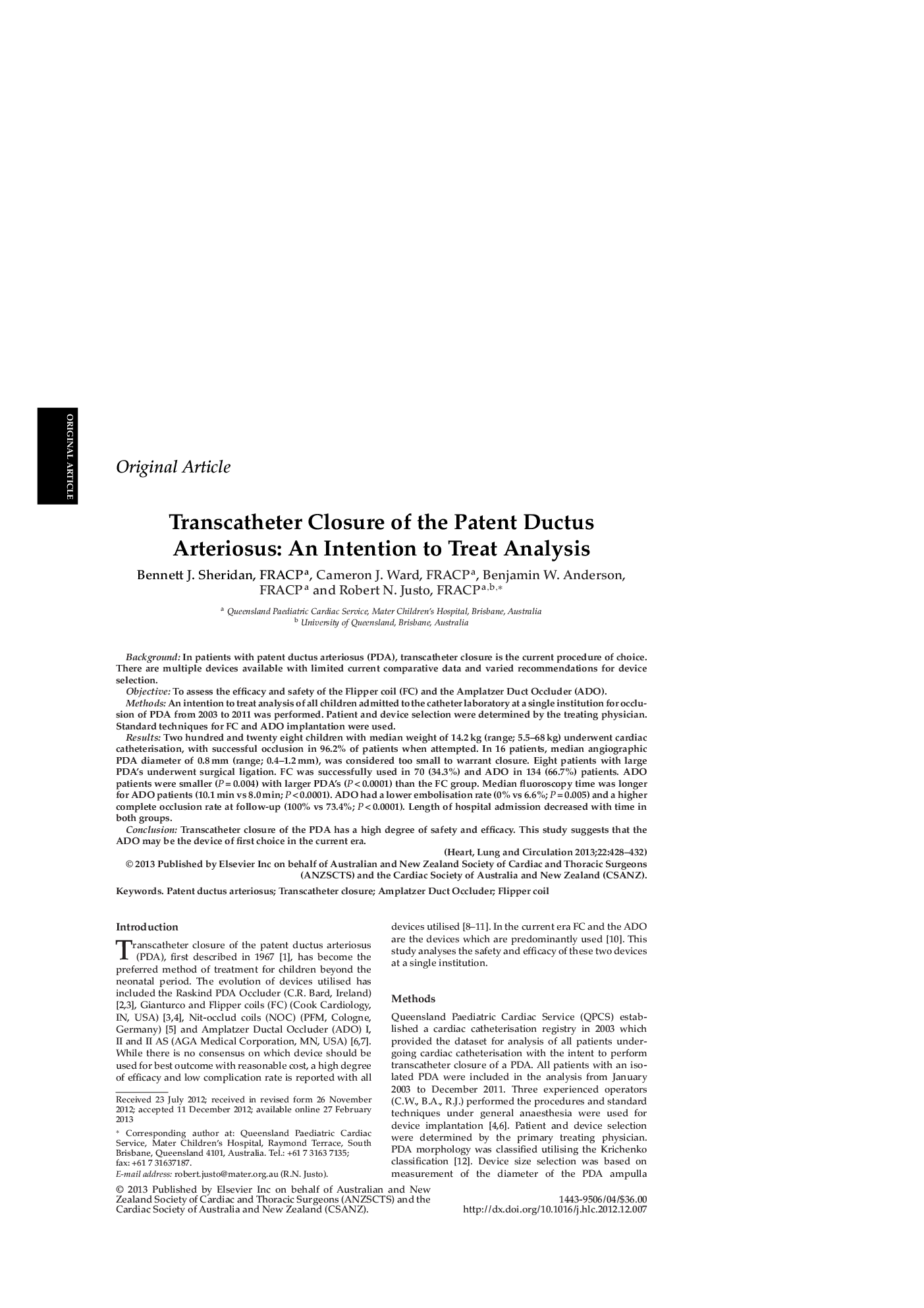| Article ID | Journal | Published Year | Pages | File Type |
|---|---|---|---|---|
| 2918955 | Heart, Lung and Circulation | 2013 | 5 Pages |
BackgroundIn patients with patent ductus arteriosus (PDA), transcatheter closure is the current procedure of choice. There are multiple devices available with limited current comparative data and varied recommendations for device selection.ObjectiveTo assess the efficacy and safety of the Flipper coil (FC) and the Amplatzer Duct Occluder (ADO).MethodsAn intention to treat analysis of all children admitted to the catheter laboratory at a single institution for occlusion of PDA from 2003 to 2011 was performed. Patient and device selection were determined by the treating physician. Standard techniques for FC and ADO implantation were used.ResultsTwo hundred and twenty eight children with median weight of 14.2 kg (range; 5.5–68 kg) underwent cardiac catheterisation, with successful occlusion in 96.2% of patients when attempted. In 16 patients, median angiographic PDA diameter of 0.8 mm (range; 0.4–1.2 mm), was considered too small to warrant closure. Eight patients with large PDA's underwent surgical ligation. FC was successfully used in 70 (34.3%) and ADO in 134 (66.7%) patients. ADO patients were smaller (P = 0.004) with larger PDA's (P < 0.0001) than the FC group. Median fluoroscopy time was longer for ADO patients (10.1 min vs 8.0 min; P < 0.0001). ADO had a lower embolisation rate (0% vs 6.6%; P = 0.005) and a higher complete occlusion rate at follow-up (100% vs 73.4%; P < 0.0001). Length of hospital admission decreased with time in both groups.ConclusionTranscatheter closure of the PDA has a high degree of safety and efficacy. This study suggests that the ADO may be the device of first choice in the current era.
